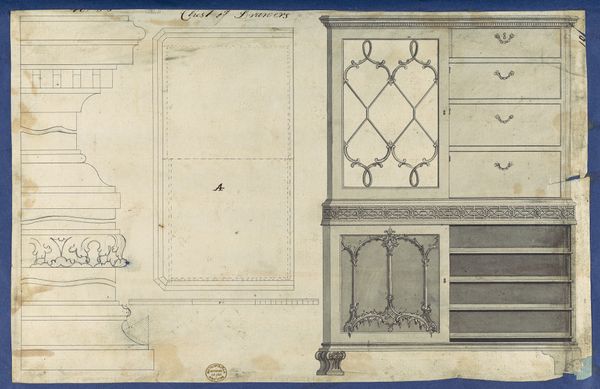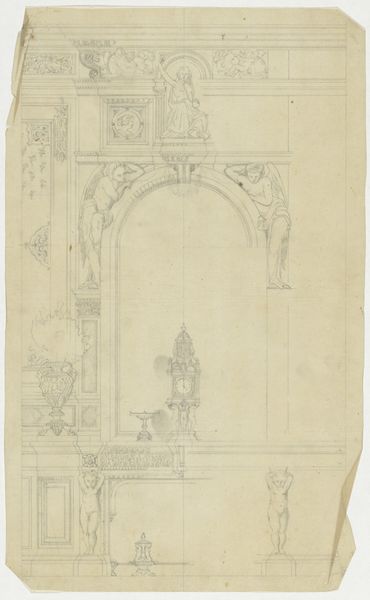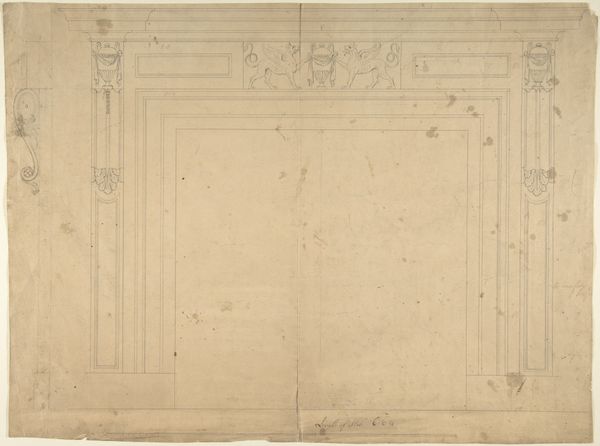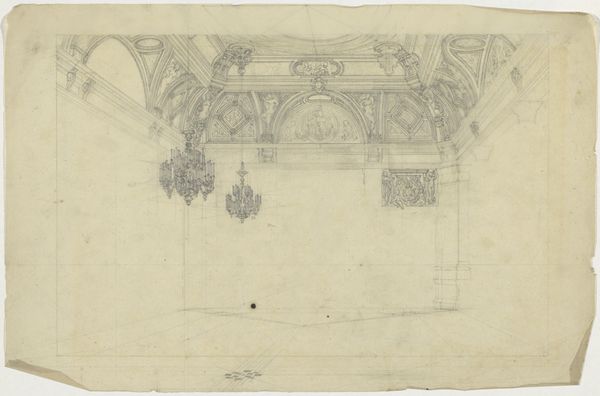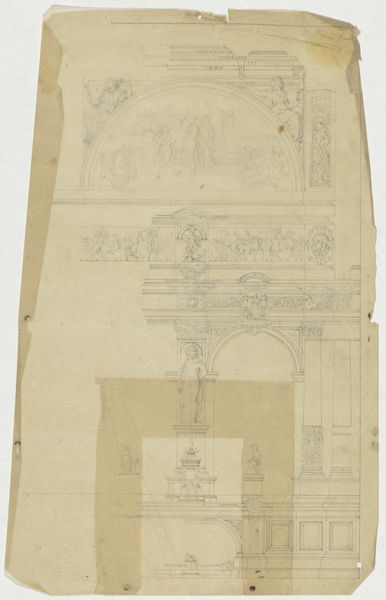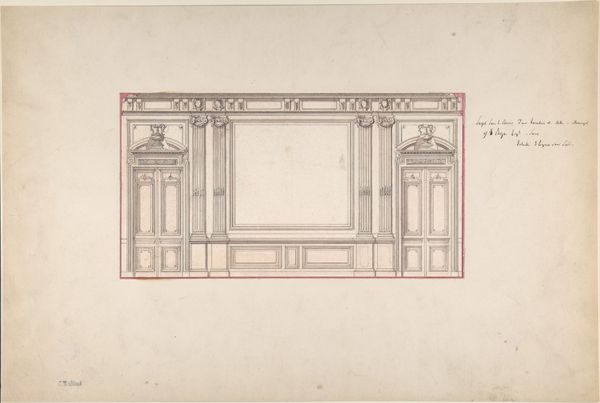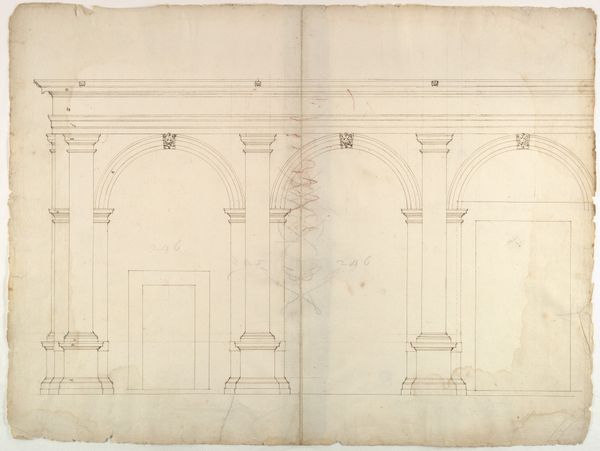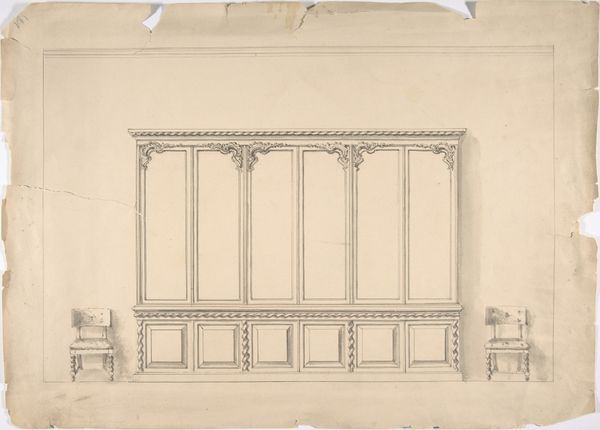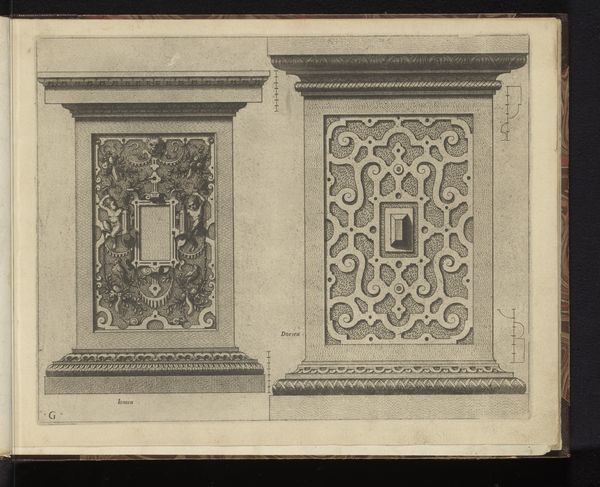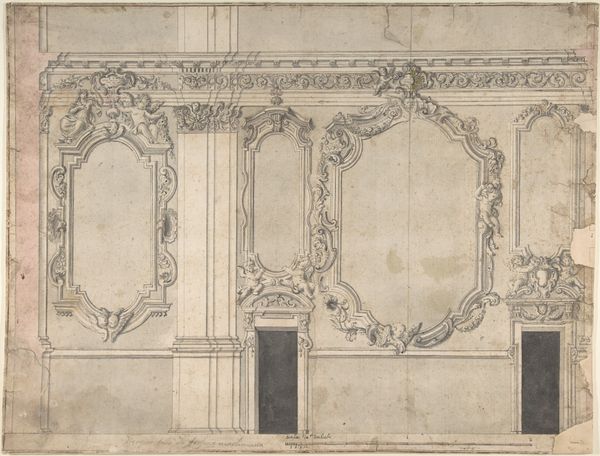
Ontwerp voor de kinderkamer op de S.S. Prinses Juliana 1874 - 1945
0:00
0:00
careladolphlioncachet
Rijksmuseum
drawing, paper, pencil
#
drawing
#
arts-&-crafts-movement
#
landscape
#
paper
#
form
#
geometric
#
pencil
#
line
Dimensions: height 274 mm, width 605 mm
Copyright: Rijks Museum: Open Domain
Curator: This intriguing pencil drawing, created by Carel Adolph Lion Cachet between 1874 and 1945, is titled "Ontwerp voor de kinderkamer op de S.S. Prinses Juliana," which translates to "Design for the children's room on the S.S. Princess Juliana." Editor: It immediately strikes me as formal yet playful—a delicate balance achieved through the interplay of rigorous geometric structure and whimsical decorative details. Curator: Indeed. Cachet's skillful use of line emphasizes form, highlighting the grid-like structure while simultaneously integrating flowing, organic motifs within the lower panels. Semiotically, the rigid upper portion could represent the established social order, while the more imaginative designs below evoke the unbridled creativity associated with childhood. Editor: I am captivated by the detailed panels beneath the windows, the darker areas evoking memories of folk-art wood carving and its reliance on instantly recognizable symbols of growth, safety and comfort. These panels would have told stories, fostered imagination for the children in this nautical space. It is clear the artist understood that symbolism can ease a child into feeling safe and loved away from land. Curator: I agree; these details are pivotal. We see how Cachet seamlessly weaves together elements of the Arts and Crafts movement, which itself celebrated a return to handcraftsmanship and the integration of art into everyday life. Note how the formal arrangements work with those intricate symbols and details, like landscape details in that distinctive style. Editor: Thinking more about the ship’s space, the very use of geometric forms might have aided children in perceiving the movement and architectural elements unique to sea-faring travel. Consider the rocking and sway—repeated visual patterns embedded the notion of both structure and space into the passengers themselves! Curator: That brings an intriguing new element, recognizing this kind of movement in this essentially flat image, even decades on. Considering semiotics more broadly here, the artist evokes not just decorative order but also potential experience—how the forms might alter experience as well as reflecting on that experience. Editor: I am left imagining the sensory impact these designs must have made, transforming what could have been a sterile environment into one brimming with narrative and comforting associations for children traveling by sea. Curator: It is a testament to the thoughtful design approach characteristic of Cachet’s work, and offers us insights into an historical effort to render even a vessel into a child-centered experience through applied structure.
Comments
No comments
Be the first to comment and join the conversation on the ultimate creative platform.

